Demystifying bimetal saw blades: a comprehensive guide
2023/08/03
Compare bimetal blades
In the realm of saw blades, the choice between different types can greatly impact the efficiency and precision of cutting operations. Among the wide range of options, bimetal saw blades have emerged as a popular choice for both professionals and DIY enthusiasts. In this blog post, we will explore what makes a blade bimetal, delve into the various types of bimetal blades, and compare them to high carbon steel and high-speed steel alternatives. By the end, you'll have a clear understanding of which blade type excels in different applications.
Understanding bimetal blades
A bimetal saw blade, as the name suggests, is composed of two different types of metals bonded together to form a single blade. Typically, the blade's body is made of a flexible and durable spring steel, while the teeth or cutting edge are formed using a high-speed steel (HSS) or cobalt alloy. This combination allows bimetal blades to leverage the best attributes of both materials, resulting in enhanced performance and longevity.
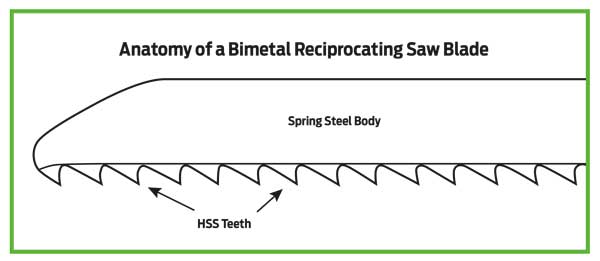
Types of bimetal blades:
BIMETAL RECIPROCATING SAW BLADES
Reciprocating saw blades are designed for cutting through various materials such as wood, metal, plastic, and more. Bimetal reciprocating saw blades excel in durability, allowing them to withstand heavy-duty applications like demolition work, metal cutting, and pipe fitting.
BIMETAL BAND SAW BLADES
Band saw blades find their application in woodworking, metalworking, and cutting curved or irregular shapes. Bimetal band saw blades feature a toothed edge made from high-speed steel, while the body consists of flexible high carbon steel. This combination enables them to deliver clean cuts and extended blade life.
BIMETAL HOLE SAWS
Hole saw blades are widely used for creating holes in various materials, including wood, plastic, drywall, and metal. Bimetal hole saw blades boast a sharp high-speed steel cutting edge that can withstand high temperatures, allowing for fast and efficient cutting while maintaining durability.
Bimetal blade tooth types:
BIMETAL WITH HSS TEETH
This type of blade features high-speed steel teeth, which offer exceptional hardness, heat resistance, and wear resistance. HSS teeth can maintain their sharpness for longer periods, making them ideal for cutting tough materials such as stainless steel, alloy steel, and non-ferrous metals. They are commonly used in metalworking industries and fabrication processes.
BIMETAL WITH COBALT TEETH
Blades with cobalt teeth are an upgraded version of the HSS bi-metal blades. The addition of cobalt enhances the heat resistance and hardness, enabling the blade to withstand even higher temperatures and provide improved cutting performance. These blades excel in demanding applications that involve cutting through hardened steel, titanium, and other challenging materials.
BIMETAL WITH CARBIDE TEETH
Some bimetal blades are designed with carbide teeth, offering an exceptional level of durability, and cutting efficiency. Carbide is an extremely hard and wear-resistant material, making it ideal for cutting through abrasive materials like ceramic tiles, fiberglass, and laminates. These blades are commonly used in construction, woodworking, and remodeling applications.
Comparing Bi-Metal, High Carbon Steel (HCS), and High-Speed Steel Blades (HSS):
BI-METAL BLADES
Bi-metal blades stand out for their versatility and durability. The combination of a flexible body and high-performance teeth enables them to handle a wide range of materials and maintain their sharpness over time. They excel in applications that involve cutting various metals, especially hardened or abrasive materials.
HIGH CARBON STEEL BLADES
High carbon steel blades are composed entirely of carbon steel. While they are inexpensive, they lack the durability and longevity of bi-metal blades. High carbon steel blades are suitable for cutting softwoods, non-ferrous metals, and plastics. However, they are prone to dulling quickly and are not recommended for heavy-duty applications.
HIGH-SPEED STEEL BLADES
High-speed steel blades, made entirely of HSS, offer excellent heat resistance and durability. They are commonly used for cutting non-ferrous metals, wood, and plastic. However, they may struggle with cutting through harder materials, and their teeth may dull more quickly compared to bi-metal blades.
Choosing the Right Blade:
WOODWORKING
For general woodworking applications like cutting softwood and hardwood, both bimetal and high carbon steel blades are suitable choices. However, if you frequently encounter nails, staples, or other hidden metal objects, a bimetal blade would be more suitable due to its enhanced durability.
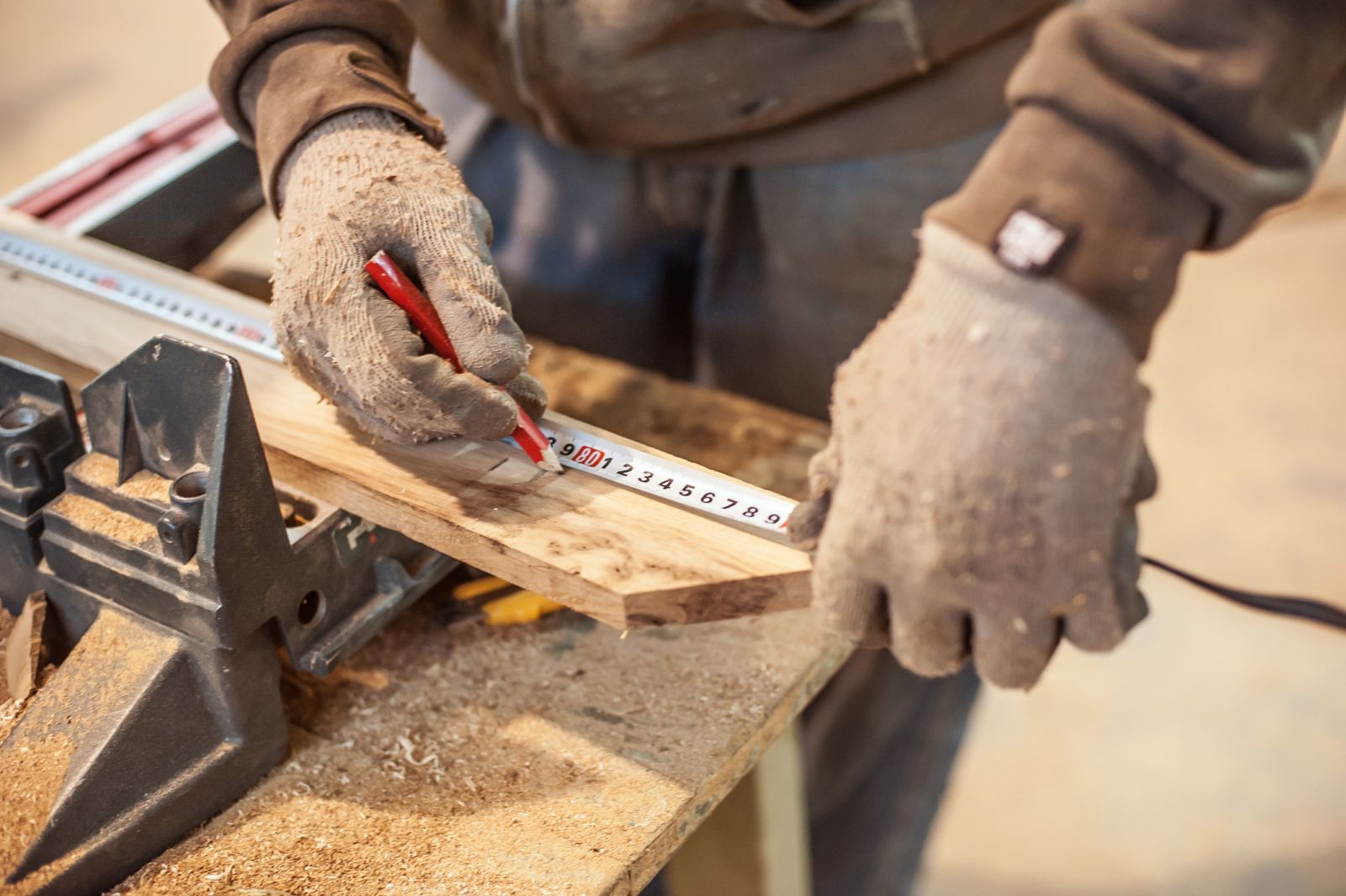
METAL CUTTING
When it comes to cutting through metals, bimetal blades excel in performance. They can effortlessly slice through various metals, including steel, aluminum, and copper. High-speed steel blades are also effective for metal cutting, particularly in applications where precision and fine finishes are essential.
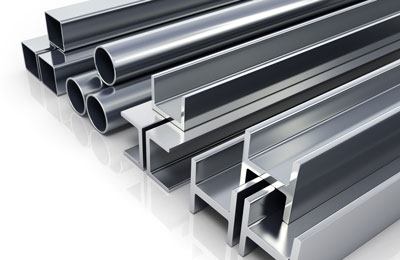
DEMOLITION & HEAVY-DUTY CUTTING
For heavy-duty applications such as demolition work or cutting through thick metals, a bimetal blade is the clear winner. Its combination of high carbon steel and high-speed steel enables it to withstand the rigors of demanding tasks, providing extended blade life and durability.
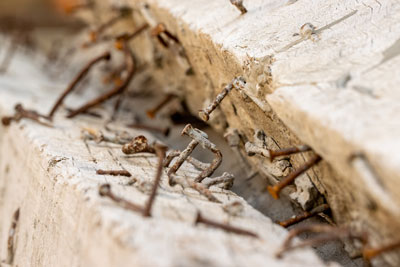
Conclusion
Bimetal saw blades offer a remarkable blend of durability, versatility, and performance, making them an excellent choice for a wide range of cutting applications. Their ability to cut through various materials, including wood, metal, and plastics, while maintaining sharpness and longevity, sets them apart from high carbon steel and high-speed steel blades. By understanding the specific requirements of your cutting task, you can confidently select the right blade type for optimal results, ensuring efficient and precise cuts every time.
Exchangeable to save you money and save the planet
Like all EAB Exchange-A-Blade green exchange products, bimetal saw blades are fully exchangeable—you buy it, you use it, and when you bring it back to the store where you bought it, you’ll get a credit towards the purchase of your next EAB bimetal saw blade.
About Exchange-A-Blade bimetal saw blades
Exchange-A-Blade bimetal saw blades are market leaders in quality and value. They can be used for wide range of materials, including wood, metal, fiberglass and plastic, They are available in two quality options PRO for the DIY’er and heavy-duty professional contractor, and IND for the extreme duty needs of the high volume contractor.
EAB Reciprocating Blades • Bimetal M2 Hole Saws • Bimetal M3 Hole Saws • Bimetal M42 Hole Saws
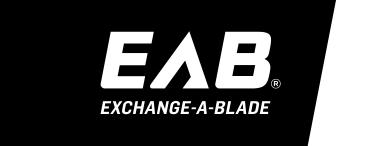




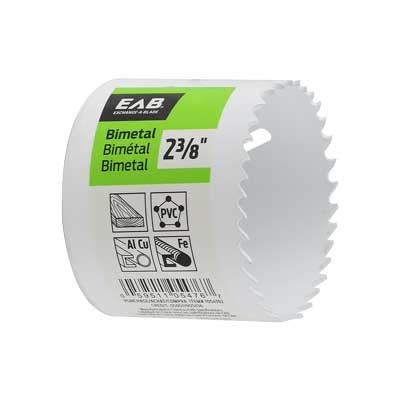

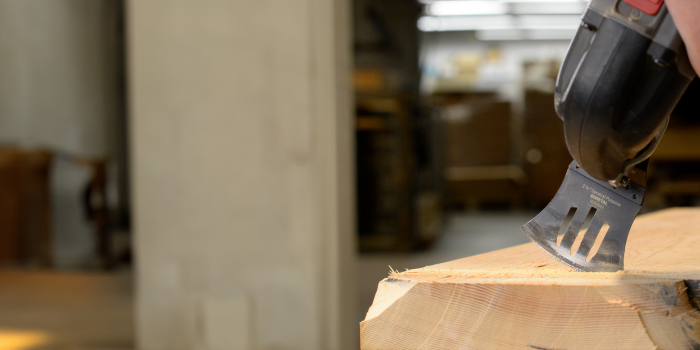
.jpg)
